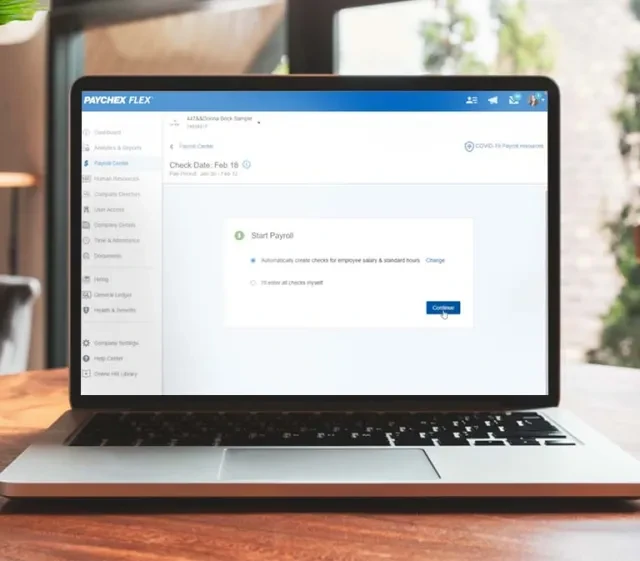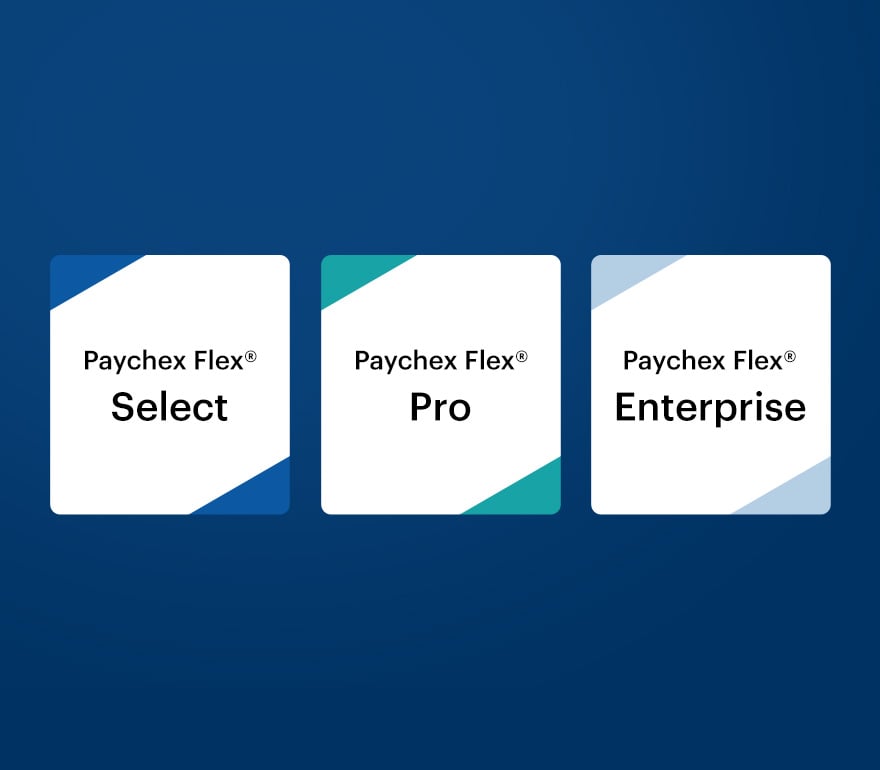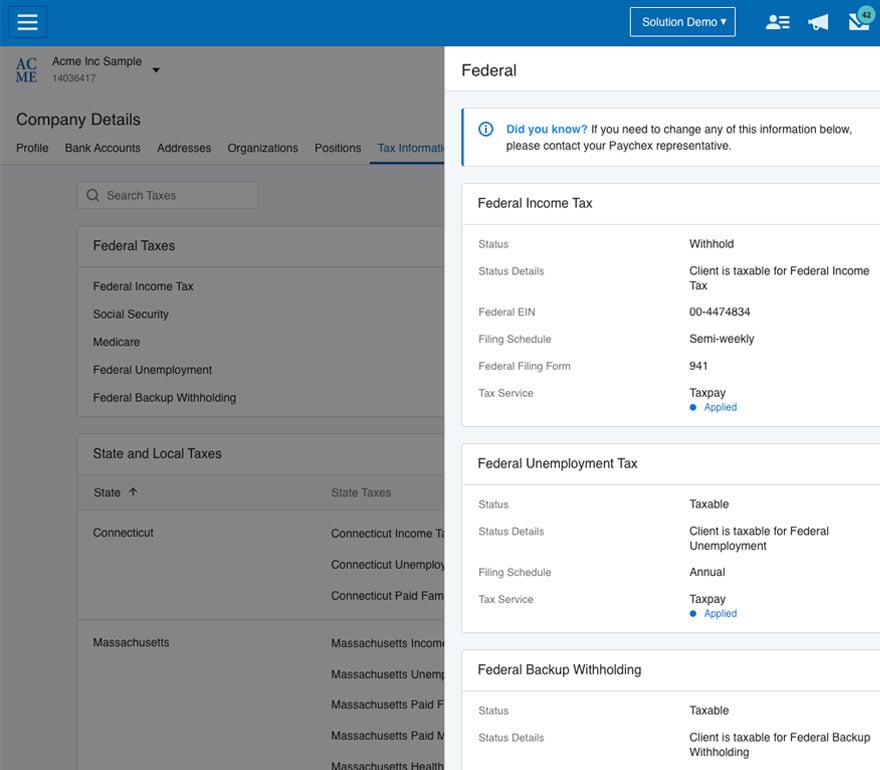Servicios de RR. HH. y nómina de Paychex en Baton Rouge, Luisiana
Paychex proporciona servicios de nómina y RR. HH. de calidad superior a empresas en Baton Rouge y áreas circundantes. Durante más de 50 años, las empresas han confiado en nosotros para obtener soluciones confiables, eficientes e integrales, adaptadas a sus necesidades únicas.
Obtenga una cotización gratis
Información de contacto de Paychex en Baton Rouge
Dirección y número de teléfono
¿Necesita asistencia al cliente?
Ver opciones de asistenciaHorario laboral
| Día de la semana | Horas | Comentario |
|---|---|---|
| lunes | 8:00 a. m. a 5:00 p. m. | CT |
| martes | 8:00 a. m. a 5:00 p. m. | CT |
| miércoles | 8:00 a. m. a 5:00 p. m. | CT |
| jueves | 8:00 a. m. a 5:00 p. m. | CT |
| viernes | 8:00 a. m. a 5:00 p. m. | CT |
| sábado | cerrado | |
| domingo | cerrado |
Baton Rouge
4324 South Sherwood Forest Blvd. Suite 125
Baton Rouge, LA, 70816
Servicios de nómina para empresas de Baton Rouge
Facilite la nómina, desde la configuración hasta el servicio y la asistencia
Podemos ayudarlo con el procesamiento de nóminas y otras tareas para que pueda concentrarse en las áreas más apremiantes de su negocio.

Comparación de los planes de nómina
Independientemente del tamaño de su empresa en Baton Rouge, elija entre varias opciones flexibles, desde soluciones que puede implementar usted mismo hasta un apoyo más exhaustivo con la nómina.

Automatizar los impuestos de nómina
Reciba ayuda para calcular, pagar y presentar sus impuestos sobre la nómina y asegure los créditos fiscales que su negocio merece.

Aplicación móvil para empleadores y empleados
Acceda fácilmente a la nómina, a recursos humanos y a otros servicios de su negocio directamente desde su teléfono inteligente o tableta.

Soluciones adicionales para ayudar a su empresa
Tanto si tiene un empleado o mil, los servicios de Paychex pueden apoyar a su empresa en Baton Rouge durante todo el ciclo de vida del empleado.
Encuentre la solución adecuada para su negocio
Paychex cuenta con la tecnología, la experiencia y el servicio al cliente para ayudarlo a hacer que su negocio de Baton Rouge prospere. ¿No sabe por dónde empezar? Le recomendaremos la mejor solución para sus necesidades únicas.
















